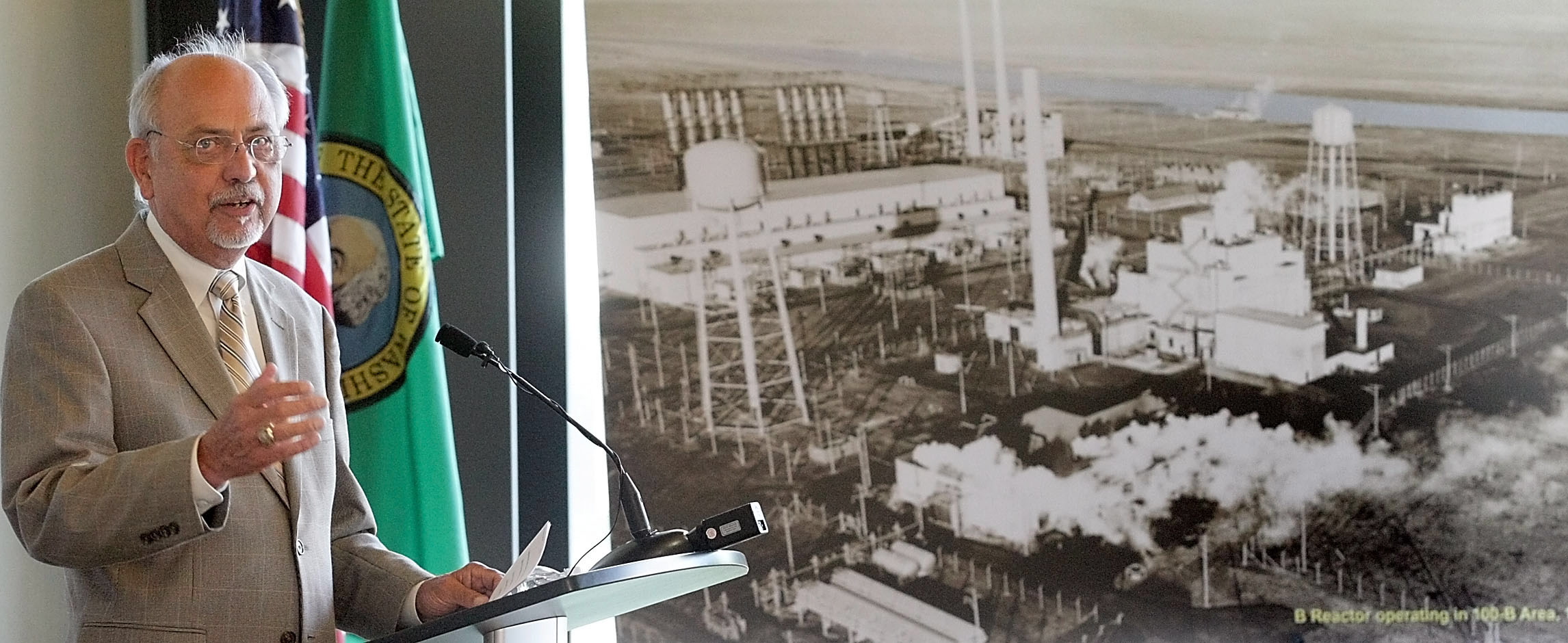The Atomic Age pioneers who built Hanford and advanced nuclear science there have a story that should be told to generations to come, said speakers Monday at a commemoration of the 70th anniversary of the Manhattan Project.
About 120 people — including six men who worked at Hanford’s historic B Reactor — gathered at the Richland Library to remember the past and look to the future when B Reactor could become part of a new Manhattan Project Historical National Park.
There is every indication that bills should be passed by the full House and full Senate with strong bipartisan support this year, said Rep. Doc Hastings, R-Wash., who sponsored the House legislation and is chairman of the Natural Resources Committee.
Proposed legislation would give the interior secretary and the energy secretary one year to work out an agreement on what roles each of their agencies would play, and then the park automatically would be formed.
That should be plenty of time, considering that B Reactor was built in 11 months, Hastings said.
A Manhattan Project park “would help honor the history, scientific contributions and enormous sacrifices made by those who worked on the project and changed the course of history,” said Sen. Maria Cantwell, D-Wash., who could not attend the event but issued a statement. She is a lead sponsor of the Senate legislation.
The sacrifice started with the 2,000 people who owned the property and lived on the more than 500 square miles that the government took over to build a secret nuclear reservation during World War II, said Gary Petersen, vice president of Hanford programs for the Tri-City Development Council.
“The U.S. was at war with Germany and Japan,” he said. “There was a very real fear that the Germans were developing atomic weapons, as stated by Albert Einstein in a letter to President Roosevelt.”
Residents of what would become Hanford would be given two weeks to three months to vacate their homes, businesses and farms, allowing the Army Corps of Engineers to take over the site. When an order was signed creating the Manhattan Project on Aug. 13, 1942, the Corps was put in charge because it had experience running large projects and could maintain the secrecy needed, said Maj. Rodney Baker of the Corps.
‘An incredible thing’
“An incredible thing happened,” Petersen said. “Fifty thousand individuals from all over the United States and some scientists and engineers from foreign countries were brought together to build what had never been built before.”
First they constructed what would be the fourth-largest city in the state to house and feed workers at Hanford, code named “Site W.”
Then they built B Reactor, the world’s first production-scale reactor, in 11 months without the aid of any computer, Petersen said. It would produce plutonium for the bomb dropped on Nagasaki, Japan, on Aug. 9, 1945.



